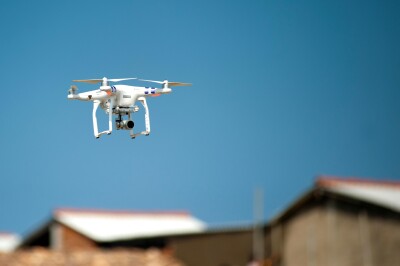Editor's Note 12/26: Shortly after this article was published, the FAA did indeed propose rules for the remote identification of drones in the U.S. The document is available through the Federal Register and is scheduled to be published on 12/31/2019.
On Friday, December 20th Commercial UAV News waited, along with everyone else in the space, for the highly anticipated official publication of the NPRM on Remote ID in the Federal Register. It didn’t come. The date has been pushed out again toward the end of December.
For years now, Remote ID has been held up as the linchpin to opening up the sky for beyond visual line of sight (BVLOS) operations and operations over people. Without some way to identify all aircraft in the national airspace these operations are not able to take place. Without knowing what is in the sky, what direction and speed it is going, and whether or not it is authorized, very little can follow. Remote ID is directly tied to the future of the sky that sees fully integrated UTM and UAM ecosystems.
With all that said, it can be easy to overlook that we’re just at the beginning of a process to enable this level of drone operation in the enterprise. Remote ID is obviously critical, but there are still significant issues with standards of operation and safety, certifications, privacy, noise, and public acceptance that must be tackled before unmanned vehicles take over the skies, and this is no small undertaking. As we start digging into these topics, the list of issues that have yet to be resolved only get longer and more complicated.
For instance, who has ultimate jurisdiction over the airspace? How will issues with federal preemption in the drone space be sorted out? What role will local/regional/state authorities take? If the FAA is ultimately responsible for the airspace, what is the manpower required to orchestrate such a massive undertaking of what could essentially be an almost limitless amount of airspace traffic? Is it even financially or logistically possible with current technology and procedures? How do individuals protect their privacy? If, to borrow a phrase from San Francisco Mayer Ed Lee, entire cities become “airports,” can there really be an opt-out option for individuals who value their privacy over the benefits drones may offer?
“There are lots of engineers,” pointed out Travis Mason, Airbus VP of Public Policy and Government Affairs, at Commercial UAV Expo 2019. “But nowhere near enough people working on policy and public relations. We need to put more resources into it, we can’t just invest in hardware. We are seriously underestimating how long it will take to gain public acceptance.”
We could continue going down this rabbit hole and get into questions about legal, safety, and regulatory standards, which has been expertly done by Christopher Korody from Drone Business Center should you want to explore this further. But the point that is being made here is that Remote ID is less the man-on-the-moon legislation that will open up the skies for integrated, unlimited unmanned operations, and a bit closer to sending our first rocket into orbit—a completely necessary and important step but nonetheless early days.
In the meantime, should you find yourself feeling discouraged about the speed at which progress is happening in this space, remember it took eight years from the day that John F. Kennedy announced they intended to put a man on the moon and the day that Neil Armstrong took his first steps there, and NASA Administrator Jim Brindenstine only just announced in October that they want to make UAM a reality in 2028. And if this isn’t inspiration enough, remember the early regulatory days of the automobile industry.
“In the late 1800’s, “Red Flag Traffic Laws” were enacted in the US and Europe: a speed limit of 4 mph was put in place for cars in rural areas; and all drivers were required to have a man waving a red flag run in front of the car,” explains Miriam McNabb, Editor-in-Chief at Dronelife in her article “What Will Drone Laws Look Like in 100 Years?”. “The “Locomotive Acts” only lasted 3 years – which was about as much time as it took the automotive industry to get enough cars on the road to make them familiar. And the same will happen with drones, but this time, at a much faster pace: regulations have already changed, and will change rapidly in the future.”
We may not be able to fully realize a fully integrated UTM and UAM ecosystem just yet, but in 2019 alone we have seen UPS obtain a complete Part 135 Standard Certification with many others obtaining waivers to fly over people and beyond visual line of sight.
















Comments